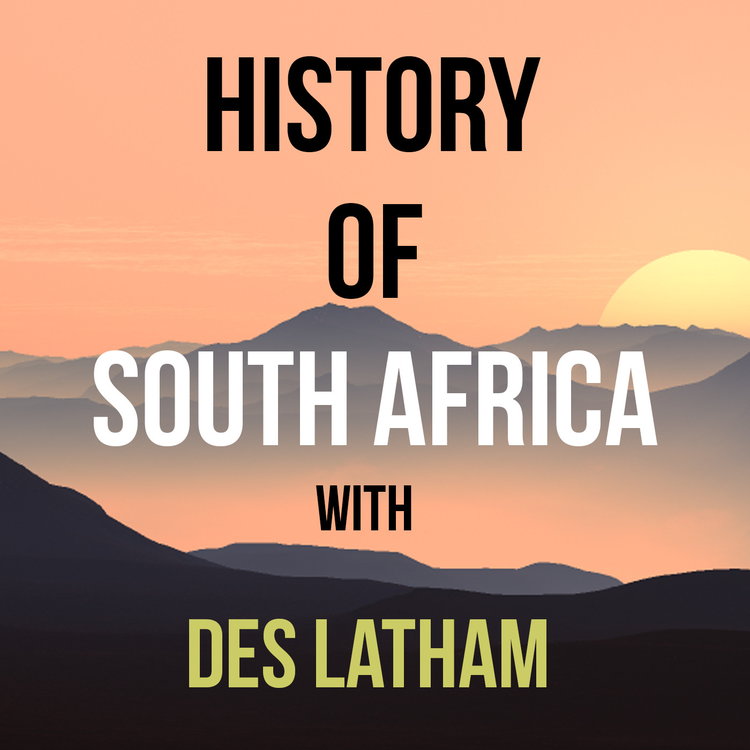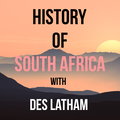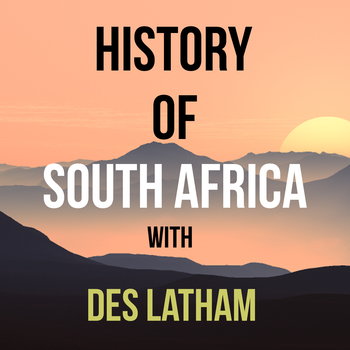
Episode 215 – Ostriches Trump Elephants in 1860 and John Dunn: Musket Trader Extraordinaire
Loading player...
Episode 215 has a rather grandiose title but let us stop for a second and take stock.
This southern land, swept by thunderstorms that appear as if by magic, and lash the landscape, rumble across the stubby veld, slinging lightning like a million volt silver sjambok, shaking rocks with their deep growls, bring everything back to life. The air before this denizens of the blue sky pass by is sullen, the horizon hazed over, after the rains everything is crisp, visibility can change in seconds from a few hundred metres to a few hundred kilometres.
I was raised in Nkwalini valley in northern Zululand, where the mysterious Mhlathuze River flows powerfully after these storms, the valley is ringed by mountains that rise from 650 feet above sea level feet to over 3000 feet a few minutes drive up around Melmoth. And from these heights, you can see the Indian Ocean 40 kilometres away after one of these refreshing storms.
Southern Africa had been drying out substantially throughout the first half of the 19th Century. Historian Charles Ballard notes that climatic research has pointed to opposite extremes of weather patterns in the Northern and Southern Hemispheres.
The climatic regime in southern Africa of dry and warm conditionsin the early nineteenth century was the reverse of the Northern Hemisphere's colder and wetter weather at this time. Some animals, like humans, would not survive this —others like the ostrich were in their element.
Turning to Natal, much of the interior was unstable, drought and famine led early white settlers to believe it had always been devoid of people whereas it had been abandoned. There is a difference between the two concepts — never settled or previously settled?
Nguni speaking refugees, not always amaZulu, arrived back in their homes in Natal through this period only to find that the settler community considered them to be aliens and a race of "vagabonds."
It became a conventional ideological tool for those who sought to justify the expropriation of land. The people were driven away by a long list of threats, military, environmental, meteorological.
With that preamble, let’s focus initially on the strange saga of John Dunn who has appeared in all his curious glory in prevous episodes. Cetshwayo gave John Dunn ten oxen and a tract of land. By July, the former border agent had resigned his job and moved into Zululand permanently. He’d had it with the British. The tract of land given to Dunn was extensive, in the immediate coastal region of southern Zululand known as Ungoye, which extended from Ngoye forest all the way down to the lower Thukela. Shortly after he moved in, Dunn took many wives. By1860 he was regarded as one of the most influential chiefs in the Zulu kingdom, ruling over more than 50 square kilometers of land and thousands of subjects. By 1860 Dunn was the main source of fireams entering Zululand, and these items rapidly replaced cattle as the main payment for lobola.
This southern land, swept by thunderstorms that appear as if by magic, and lash the landscape, rumble across the stubby veld, slinging lightning like a million volt silver sjambok, shaking rocks with their deep growls, bring everything back to life. The air before this denizens of the blue sky pass by is sullen, the horizon hazed over, after the rains everything is crisp, visibility can change in seconds from a few hundred metres to a few hundred kilometres.
I was raised in Nkwalini valley in northern Zululand, where the mysterious Mhlathuze River flows powerfully after these storms, the valley is ringed by mountains that rise from 650 feet above sea level feet to over 3000 feet a few minutes drive up around Melmoth. And from these heights, you can see the Indian Ocean 40 kilometres away after one of these refreshing storms.
Southern Africa had been drying out substantially throughout the first half of the 19th Century. Historian Charles Ballard notes that climatic research has pointed to opposite extremes of weather patterns in the Northern and Southern Hemispheres.
The climatic regime in southern Africa of dry and warm conditionsin the early nineteenth century was the reverse of the Northern Hemisphere's colder and wetter weather at this time. Some animals, like humans, would not survive this —others like the ostrich were in their element.
Turning to Natal, much of the interior was unstable, drought and famine led early white settlers to believe it had always been devoid of people whereas it had been abandoned. There is a difference between the two concepts — never settled or previously settled?
Nguni speaking refugees, not always amaZulu, arrived back in their homes in Natal through this period only to find that the settler community considered them to be aliens and a race of "vagabonds."
It became a conventional ideological tool for those who sought to justify the expropriation of land. The people were driven away by a long list of threats, military, environmental, meteorological.
With that preamble, let’s focus initially on the strange saga of John Dunn who has appeared in all his curious glory in prevous episodes. Cetshwayo gave John Dunn ten oxen and a tract of land. By July, the former border agent had resigned his job and moved into Zululand permanently. He’d had it with the British. The tract of land given to Dunn was extensive, in the immediate coastal region of southern Zululand known as Ungoye, which extended from Ngoye forest all the way down to the lower Thukela. Shortly after he moved in, Dunn took many wives. By1860 he was regarded as one of the most influential chiefs in the Zulu kingdom, ruling over more than 50 square kilometers of land and thousands of subjects. By 1860 Dunn was the main source of fireams entering Zululand, and these items rapidly replaced cattle as the main payment for lobola.

